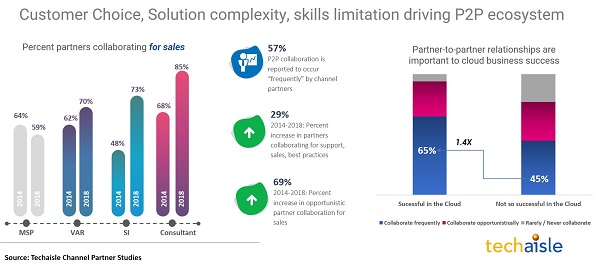Consider these statistics from Techaisle’s recent worldwide channel sizing and channel trends studies. 62% of MSPs have less than 25 employees, 92% of MSPs have less than US$5 million in annual revenue. A large majority of these MSPs sell to smaller SMBs who are currently experiencing gut-wrenching disruptions to their businesses. MSPs are not immune to the COVID-19 crisis. 15% of MSPs either want to sell their business or wind down and 52% of MSPs need external capital to grow and remain viable or are seeking M&A opportunities. While MSP business model success is predicated on recurring revenue, profitable MSPs drive more than 40% of revenue from non-recurring sources. Pursuit of recurring revenue is not a bad idea as it provides a foundation for future revenue and it is important to business valuations. But data shows that recurring revenue is not the sole indicator of business success.
Recurring revenue can predict earnings thereby reducing risk, however, selling licenses or seats alone does not create a high margin business. MSPs who have moved to predominantly recurring revenue model are more likely to run out of operating capital than they are to reap the benefit of enhanced business valuations or the ability to manage cash flows during an episodic global crisis. Techaisle’s survey data clearly shows that channels with high percent of recurring revenues have been consistently unsuccessful in managing uncertainties in business climate. MSPs that lack margin also lack the ability to invest in improving their capacity to innovate and compete in the long-term and for weathering business interruptions. MSPs that do have meaningful margins, on the other hand, have the ability to invest in capabilities that enable them to expand into new market areas or overcome periods of economic crisis.
A typical pure-play MSP’s 84% to 90% of recurring revenue is spent on human capital, RMM/PSA solutions and other overheads, leaving between 10% to 16% for margins.
















